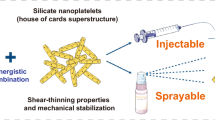Abstract
Purpose
Closure of defunctioning loop ileostomy often is associated with division of complex peristomal adhesions through a parastomal incision with limited exposure. The goal was to determine whether sprayable hydrogel adhesion barrier (SprayGel™) will reduce peristomal adhesions and facilitate closure of ileostomy.
Methods
Patients undergoing closure of loop ileostomy were randomized to have hydrogel adhesion barrier sprayed around both limbs of ileostomy for 20 cm (SprayGel™ group, n = 19), or to control without adhesion barrier (control group, n = 21). Ileostomy was reversed at ten weeks after construction. Extent of peristomal adhesions was scored in blinded manner (each quadrant, range, 1–3: 3 = most severe; total, range, 4–12: 12 = most severe).
Results
Use of adhesion barrier was associated with significant reduction in overall adhesion scores (mean, 6.11 vs. 9.67; P < 0.0005), four-quadrant adhesion scores (Quadrant A: 1.68 vs. 2.52, P = 0.002; Quadrant B: 1.42 vs. 2.33, P < 0.0005; Quadrant C: 1.42 vs. 2.24, P < 0.0005; Quadrant D: 1.58 vs. 2.48, P = 0.002), and proportion of patients with dense (scores ≥ 8) adhesions (0.11 vs. 0.71; P < 0.0005). Time taken to mobilize (16.53 vs. 21.67 minutes; P = 0.008) and close ileostomy (35.37 vs. 41.90 minutes; P = 0.008) was significantly reduced. Postoperative complications were comparable.
Conclusions
A sprayable hydrogel adhesion barrier placed around the limbs of a defunctioning loop ileostomy reduced peristomal adhesions and might facilitate closure of ileostomy.
Similar content being viewed by others
References
Francois Y, Dozois RR, Kelly KA, et al. Small intestinal obstruction complicating ileal pouch-anal anastomosis. Ann Surg 1989;209:46–50.
Menzies D. Prospective adhesions: their treatment and relevance in clinical practice. Ann R Coll Surg 1993;75:147–53.
Beck D, Ferguson M, Opelka F, Fleshman J, Gervaz P, Wexner SD. Effect of previous surgery on abdominal opening time. Dis Colon Rectum 2000;43:1749–53.
Parker MC, Wilson MS, Menzies D, et al. Surgical and Clinical Adhesions Research (SCAR) Group. Colorectal surgery: the risk and burden of adhesion-related complications. Colorectal Dis 2004;6:506–11.
Ellis H, Moran BJ, Crowe AM. Adhesion-related hospital readmission after abdominal and pelvic surgery: retrospective cohort study. Lancet 1999;353:1476–80.
Ray NF, Denton WG, Thamer M, Henderson SC, Perry S. Abdominal adhesiolysis: inpatient care and expenditures in the United States in 1994. J Am Coll Surg 1998;186:1–9.
Menzies D, Ellis H. Intestinal obstruction from adhesions: how big is the problem? Ann R Coll Surg Engl 1990;72:60–3.
Dunn R, Lyman MD, Edelman PG, Campbell PK. Evaluation of the SprayGel (trademark) adhesion barrier in the rat cecum abrasion and rabbit uterine horn adhesion models. Fertil Steril 2001;75:411–6.
Abbott J, Thomson A, Vancaillie T. SprayGel following surgery for Asherman’s syndrome may improve pregnancy outcome. J Obstet Gynaecol 2004;24:710–1.
Mettler L, Audebert A, Lehmann-Willenbrock E, Schive K, Jacobs VR. Prospective clinical trial of SprayGel as a barrier to adhesion formation: an interim analysis. J Am Assoc Gynecol Laparosc 2003;10:339–44. Comment in: J Am Assoc Gynecol Laparosc 2004;11:130.
Mettler L, Audebert A, Lehmann-Willenbrock E, Schive-Peterhansl K, Jacobs VR. A randomized, prospective, controlled, multicenter clinical trial of a sprayable, site-specific adhesion barrier system in patients undergoing myomectomy. Fertil Steril 2004;82:398–404.
Becker JM, Dayton MT, Fazio VW, et al. Prevention of postoperative abdominal adhesions by a sodium hyaluronate-based bioresorbable membrane: a prospective, randomized, double-blind multicenter study. J Am Coll Surg 1996;183:297–306.
Beck DE. The role of Seprafilm bioresorbable membrane in adhesion prevention. Eur J Surg Suppl 1997;577:49–55.
Raferty AT. Regeneration of peritoneum: a fibrinolytic study. J Anat 1979;129:659–64.
Gomel V, Urman B, Gurgan T. Pathophysiology of adhesion formation strategies for prevention. J Reprod Med 1996;41:35–41.
Mettler L. Pelvic adhesions: laparoscopic approach. Ann NY Acad Sci 2003;997:255–68.
deZerega GS. Use of adhesion prevention barriers in ovarian surgery, tubalplasty, ectopic pregnancy, endometriosis, adhesiolysis, and myomectomy. Curr Opin Obstet Gynecol 1996;8:230–7.
Tang CL, Seow-Choen F, Fook-Chong S, Eu KW. Bioresorbable adhesion barrier facilitates early closure of the defunctioning ileostomy after rectal excision- a prospective, randomized trial. Dis Colon Rectum 2003;46:1200–7.
Ferland R, Mulani D, Campbell PK. Evaluation of a sprayable polyethylene glycol adhesion barrier in a porcine efficacy model. Hum Reprod 2001;16:2718–23.
Johns DA, Ferland R, Dunn R. Initial feasibility study of a sprayable hydrogel adhesion barrier system in patients undergoing laparoscopic ovarian surgery. J Am Assoc Gynecol Laparosc 2003;10:334–8.
Metwally M, WatsonA, Lilford R, Vandekerckhove P. Fluid and pharmacological agents for adhesion prevention after gynaecological surgery. The Cochrane Database of Systemic Reviews 2006:3.
Author information
Authors and Affiliations
Corresponding author
Additional information
Poster presentation at the meeting of The American Society of Colon and Rectal Surgeons, Dallas, Texas, May 8 to 13, 2004.
†Deceased.
Supported by the Confluent Surgical Inc., the manufacturer of SprayGel™.
About this article
Cite this article
Tjandra†, J.J., Chan, M.K.Y. A Sprayable Hydrogel Adhesion Barrier Facilitates Closure of Defunctioning Loop Ileostomy: A Randomized Trial. Dis Colon Rectum 51, 956–960 (2008). https://doi.org/10.1007/s10350-007-9181-4
Received:
Revised:
Accepted:
Published:
Issue Date:
DOI: https://doi.org/10.1007/s10350-007-9181-4




